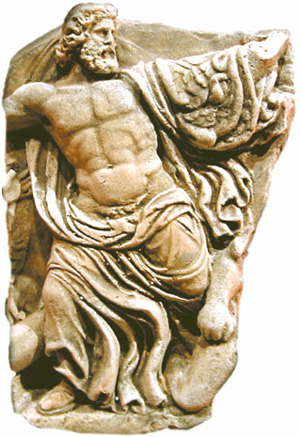...Best of Sicily presents... Best of Sicily Magazine. ... Dedicated to Sicilian art, culture, history, people, places and all things Sicilian. |
by Vincenzo Salerno | |||
Magazine Index Best of Sicily Arts & Culture Fashion Food & Wine History & Society About Us Travel Faqs Contact Map of Sicily
|
They were the first identifiable population of Sicily, though probably not initially a cohesive (unified) civilisation so much as a loose network of settlements of inhabitants who spoke the same language. The Sicanians were present when the Mycenaeans and Ausonians visited the Sicilian coasts, and the temple builders of Malta probably had the same roots as this indigenous people of Sicily, namely the so-called "Proto-Sicanians" living in Sicily circa 4,000 BC (BCE). The Sicanians initially inhabited all of Sicily. By around 1,000 BC, they had been restricted to the Sicanian Mountains by the encroachment of the Elymians in the west and the Sikels in the east, though there does not seem to have been major warfare between these colonists and the Sicanians. To understand the Greeks' view of the Sicanians as quasi-barbaric, discouraging Siceliots (Sicilian Greeks) from marrying them, it is important to understand the social milieu of ancient Sicily. By around 700 BC, the Greeks began colonising eastern Sicily while the Phoenicians established trading settlements in the west. The Elymians, whose roots were probably in Asia Minor (Anatolia), were rapidly and readily Hellenised. The Sikels, an Italic people, were Hellenised with minimal conflict despite occasional revolts such as that led by Ducetius. It is thought that, in contrast to these peoples, the Sicanians did not have an Indo-European language or culture, though this matter is debated by scholars. The point is that by 60 BC, when Diodorus began his literary activity, there were few, if any, identifiable Sicanian communities left, and these would have been in the area of the Platani Valley in the Sicanian Mountains. According to Diodorus and others, Kokalos lived centuries earlier. The once-navigable Platani (anciently the Halykos) winds its way through the Sicanian "Kamicos" Mountains to a mouth midway between Agrigento and Sciacca. The story of Daedalus is well known. Camicum referred not only to Kamikos; it was a Sican district of Akragas, the ancient city of Agrigento founded by Greeks around 582 BC on the slopes of what has been called Mount Camicos. Another interesting site is Mount Kronio, near Sciacca, where archaeological traces of Sicanian civilisation have been found. It has been suggested that Kokalos spent some time outside Naro, to the east of Agrigento, in the so-called "Palace of Kokalos." We don't know what Kokalos looked like; the figure shown here is Zeus. About the Author: Palermo native Vincenzo Salerno has written biographies of several famous Sicilians, including Frederick II and Giuseppe di Lampedusa. | ||
Top of Page |
 Kokalos (Latin Cocalus) was
identified by
Kokalos (Latin Cocalus) was
identified by